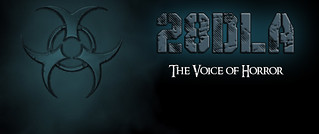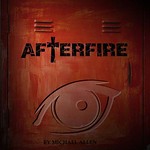*full disclosure: a Blu-ray screener of this film was provided by IFC Films.
Director/writer: Rodney Ascher.
Cast: Bill Blakemore, Geoffrey Cocks, Juli Kearns, John Fell Ryan and Jay Weidner.
There are elements that separate Stanley Kubrick's films from many others. They are often layered with meaning and those meanings can and do change with multiple viewings. His film works have been studied and analysed, extensively. But, opinions on Kubrick's works are vast. Rodney Ascher's new film, Room 237, offers five more opinions on Kubricks' 1980 horror film, The Shining. These five opinions are diverse and the evidence for their hypotheses are poorly evidenced and thus: unproven. Still, this film offers a great deal of background on Kubrick's directing style and approach to filmmaking.
The motivation for Room 237 is simply to offer a discussion on The Shining. Five interviewees: Jay Weidner, John Fell Ryan, Juli Kearns, Bill Blakemore and Geoffrey Cocks, offer their take on the film, or their insights on Kubrick's approach to filmmaking. Each voice has a different opinion. Though, some opinions hold more water than others. As well, the geography of the film, the settings, themes and characters are looked at on several levels.
The hypotheses on Kubrick's hidden meanings and themes are vast. Kearns alludes to the Greek myth of Theseus and the Minotaur. One only has to look at the maze, central to the film, to see that there are elements of this myth present in The Shining's narrative. However, some of the imagery is not as telling as Kearns might like the viewer to believe. As well, the narrator Cocks believes that the film alludes to NAZI Germany and their atrocities against the Jews. Cocks is a historian and he brings some of his biases to the film. So, the appearance of the number 1942 and German typewriters may be more inane than one might believe. Weidner's approach to the film is the most conspiratorial. Weidner believes that The Shining is Kubrick's apology to his fans, for his role in possible faked moon landings. This critic is not much of conspiracy theorist, but some of Weidner's dialogue does seem to scratch at something meaningful. There are other hypotheses; however, viewers may or may not choose to believe the narrator's opinions. This viewer was very skeptical of many of them.
This viewer was more intrigued by some of the analysis on Kubrick's shooting techniques and use of space. Some of Kubrick's continuity errors are looked at and discussed, as well. Again, these might be missteps on the part of the director. It is interesting to note that there are many continuity mistakes in the film and one might wonder if there is a reason for all of these errors. After all, Kubrick was such a perfectionist, when it came to filmmaking. The errors do not have a running theme, or driving undercurrent though. There is also some discussion on Kubrick's use of transitions. These changes in scenes are truly remarkable as Kubrick utilizes consistency in colour to aid in these morphings. Some of the transitions use dissolves. These changes in perspective alter size and shape, which also gives a new perspective on the film. Most interestingly, the settings used in The Shining are mapped out. The geography of the film makes certain shots impossible, while showing how Kubrick intentionally altered certain shots to possibly unsettle the viewer. All of these different approaches to the film make Room 237 a compelling viewing.
Room 237 will be coming to home entertainment formats soon and fans of Kubrick will likely enjoy this documentary. Full of differing opinions (some of which seem a little insane), this title looks at more than a film. The Shining is more of an art form, because of its striking directing style and use of space. Room 237's hypotheses are not very convincing. However, there are enough film tidbits here to satisfy film, or horror aficionados. This critic would just like to see a more convincing look at the themes of The Shining, which are wide open to interpretation.
Overall: 7 out of 10 (lots of voices on the film, use of other film clips can be slightly distracting).
For more analyses on The Shining, film fans are encouraged to look at Robert Ager's many takes on the film, in video formats:
The Shining Analyses at Collative Learning
| |
Advertise Here - Contact me Advertise at 28DLA
Subscribe to 28 Days Later: An Analysis Email Subscription
Director/writer: Rodney Ascher.
Cast: Bill Blakemore, Geoffrey Cocks, Juli Kearns, John Fell Ryan and Jay Weidner.
There are elements that separate Stanley Kubrick's films from many others. They are often layered with meaning and those meanings can and do change with multiple viewings. His film works have been studied and analysed, extensively. But, opinions on Kubrick's works are vast. Rodney Ascher's new film, Room 237, offers five more opinions on Kubricks' 1980 horror film, The Shining. These five opinions are diverse and the evidence for their hypotheses are poorly evidenced and thus: unproven. Still, this film offers a great deal of background on Kubrick's directing style and approach to filmmaking.
The motivation for Room 237 is simply to offer a discussion on The Shining. Five interviewees: Jay Weidner, John Fell Ryan, Juli Kearns, Bill Blakemore and Geoffrey Cocks, offer their take on the film, or their insights on Kubrick's approach to filmmaking. Each voice has a different opinion. Though, some opinions hold more water than others. As well, the geography of the film, the settings, themes and characters are looked at on several levels.
The hypotheses on Kubrick's hidden meanings and themes are vast. Kearns alludes to the Greek myth of Theseus and the Minotaur. One only has to look at the maze, central to the film, to see that there are elements of this myth present in The Shining's narrative. However, some of the imagery is not as telling as Kearns might like the viewer to believe. As well, the narrator Cocks believes that the film alludes to NAZI Germany and their atrocities against the Jews. Cocks is a historian and he brings some of his biases to the film. So, the appearance of the number 1942 and German typewriters may be more inane than one might believe. Weidner's approach to the film is the most conspiratorial. Weidner believes that The Shining is Kubrick's apology to his fans, for his role in possible faked moon landings. This critic is not much of conspiracy theorist, but some of Weidner's dialogue does seem to scratch at something meaningful. There are other hypotheses; however, viewers may or may not choose to believe the narrator's opinions. This viewer was very skeptical of many of them.
This viewer was more intrigued by some of the analysis on Kubrick's shooting techniques and use of space. Some of Kubrick's continuity errors are looked at and discussed, as well. Again, these might be missteps on the part of the director. It is interesting to note that there are many continuity mistakes in the film and one might wonder if there is a reason for all of these errors. After all, Kubrick was such a perfectionist, when it came to filmmaking. The errors do not have a running theme, or driving undercurrent though. There is also some discussion on Kubrick's use of transitions. These changes in scenes are truly remarkable as Kubrick utilizes consistency in colour to aid in these morphings. Some of the transitions use dissolves. These changes in perspective alter size and shape, which also gives a new perspective on the film. Most interestingly, the settings used in The Shining are mapped out. The geography of the film makes certain shots impossible, while showing how Kubrick intentionally altered certain shots to possibly unsettle the viewer. All of these different approaches to the film make Room 237 a compelling viewing.
Room 237 will be coming to home entertainment formats soon and fans of Kubrick will likely enjoy this documentary. Full of differing opinions (some of which seem a little insane), this title looks at more than a film. The Shining is more of an art form, because of its striking directing style and use of space. Room 237's hypotheses are not very convincing. However, there are enough film tidbits here to satisfy film, or horror aficionados. This critic would just like to see a more convincing look at the themes of The Shining, which are wide open to interpretation.
Overall: 7 out of 10 (lots of voices on the film, use of other film clips can be slightly distracting).
For more analyses on The Shining, film fans are encouraged to look at Robert Ager's many takes on the film, in video formats:
The Shining Analyses at Collative Learning
| |
Advertise Here - Contact me Advertise at 28DLA
Subscribe to 28 Days Later: An Analysis Email Subscription


 Sunday, September 29, 2013
Sunday, September 29, 2013
 Michael Allen
Michael Allen




 Posted in:
Posted in: 


0 comments:
Post a Comment